25 Common Landscaping Mistakes and How to Avoid Them
You may know exactly how you want your yard to look and function, or you may have just a few ideas of what you want but no idea what to do with them. Either way, your landscape design is an integral part of creating outdoor spaces that are welcoming, visually appealing, and will work well for you, your family, your pets, and your guests. Therefore, it is essential that you put together a plan and avoid costly or unsightly mistakes that you are sure to regret later.
To help you avoid bad landscaping mistakes, here are 25 of the most common mistakes people make when landscaping their yards, as well as tips on how you can avoid them.
1. Forgetting About the Front Yard
Most of us spend much more time in our backyards than in our front yards. The backyard is where we grill, where our children play, where our dogs spend time outside, and where we entertain guests. It makes sense that we would primarily focus on this area, but it is important that you do not forget about the front yard while you are designing your landscaping.
Your front yard landscaping significantly affects the curb appeal of your home. It is the first thing that your neighbors, guests, or potential buyers see, which means it affects the first impression they have of your home and hints at what they might find inside.
Dedicate most of your time and budget to creating an amazing backyard that will meet your needs and provide a comfortable, welcoming space for your family and friends, but do not forget about your front yard and that your property’s visual appeal and function begin there.
2. Not Setting a Budget in Advance
Landscaping is an investment and lots of folks do not realize just how much it costs to create a backyard oasis for their family to enjoy. Even bad landscaping can cost tens of thousands of dollars and leave you with an unsatisfactory end result. Before you begin to design your landscaping, determine how much you have for the overall project. This number is going to influence all of your decisions, so it is important to know your budget from the beginning.
Setting a budget is not exciting or fun, but it provides you with the parameters within which you can come as close as possible to creating the backyard of your dreams. So, once you have this part of your plan in place, you will have the freedom to do the exciting, fun stuff while knowing what you can and cannot afford to include.
Failing to determine a budget early on can lead to disaster. You could end up spending way more than you planned and unexpectedly go into debt. Or you could have to stop in the middle of your project when you run out of money and are unable to finish.
There is no need to run into these issues when landscaping your yards. Simply set a budget and know how much money you are working with before you start designing your landscaping.
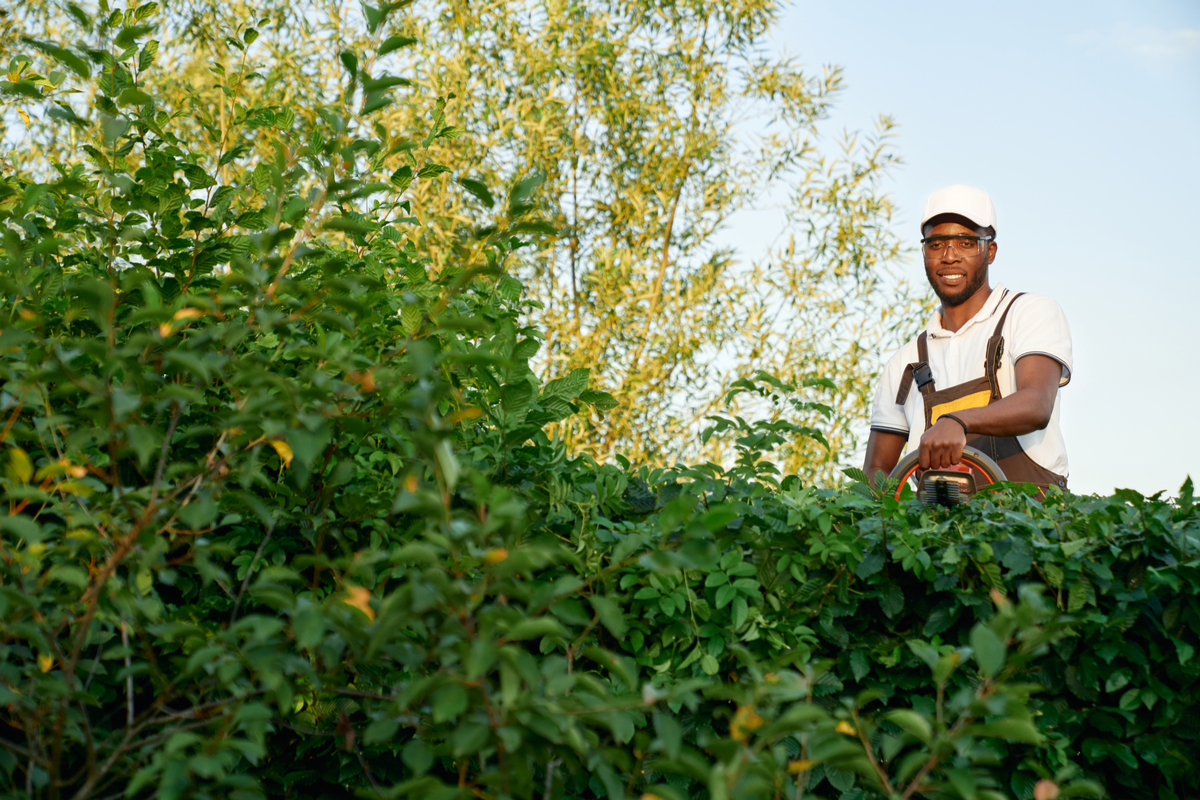
3. Failing to Consider Maintenance Requirements
Landscaping your property does not end when you place the last plant or do the final wiring for your outdoor lighting. As soon as you finish installing your landscaping, it will be time to start maintaining it. The choices you make during the design and installation phase will significantly affect how much time and money you will later put into maintaining your yards. For example, choosing native plants means using less water to irrigate them and spending very little time maintaining them, while choosing exotic plants means higher irrigation costs and spending more time caring for them and helping them thrive.
Another example is choosing between natural grass and artificial grass for your lawn. A natural grass lawn will require hundreds of hours of maintenance each year that you will spend mowing, weeding, edging, aerating, and applying fertilizers and pesticides. It will also require thousands (or tens of thousands) of gallons of water and purchasing all of the equipment and products required to keep it healthy and looking its best. Choosing synthetic turf instead means no irrigation, no lawnmowers or edgers to buy, no pesticides or herbicides to purchase or apply, and just some minimal maintenance to clean it and fluff it every once in a while.
This is a great example of how the choices you make can significantly impact the level of ongoing maintenance required to care for your landscaping. Make smart choices in the design phase to help ensure you spend less time maintaining your landscaping and more time enjoying it in the future.
4. Not Taking a Holistic Approach
Your front yard, side yards, and backyard should all be part of a cohesive, overall design that considers each area and how it will flow into the next. This is especially important in your backyard where you are going to spend most of your time and will likely have the highest number of areas with different functions. Failing to consider how all of the areas work together and the overall visual they create is just bad landscaping practice and will leave you regretting your choices.
Balance, size, color, texture, and scale are all landscape design elements that must be considered. A landscape designer is a huge help in this, but if you are taking this on as a do-it-yourself endeavor, you are going to need to do some research and really put a lot of effort into this part of your design. Having a holistic design plan is crucial, so this is one landscaping tip you just cannot avoid.
5. Failing to Make the Design Functional
How your yard looks is important, but it is not more important than how it functions. A good-looking yard is great, but failing to consider how your family, your guests, your pets, and future buyers will use your yard is a huge mistake. Skipping this aspect of design could mean planting a flowerbed in your kids’ favorite play area or placing shrubs right on the path your dog always takes to their restroom area.
Make a list of all the ways you and your family currently use your yard and how you want to use your yard after you finish the new design. Make sure you consider everyone’s needs, including the needs of all of your family members, your pets, and any other stakeholders who spend time in your yard. If your list includes anything particularly unique that will not be easy to remove, you might also want to consider how this will affect the way future buyers can use the yard, since this might affect your ability to sell the property.
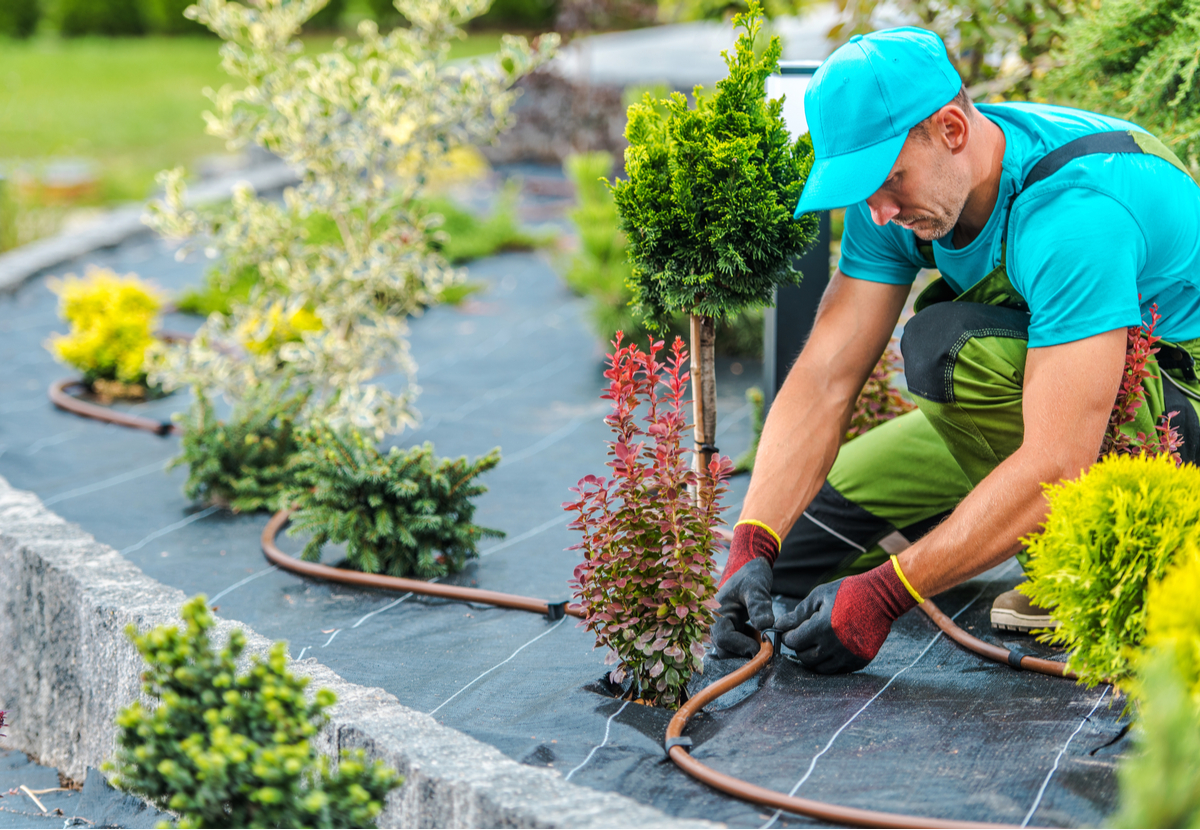
6. Poor Irrigation Planning
Proper irrigation is an essential part of caring for your investment. Hand watering wastes water and takes way too much time, so just cross this off the list right away. This is not an option. If you are installing landscaping, you have to install an irrigation system. You need to include this in your design plan from the beginning, since putting it in afterward will, at minimum, be a headache and, at worst, will cost you extra money and will make it more difficult to conceal drip lines without messing up the landscaping you just installed. If you are installing sprinklers, you will actually have to dig up your landscaping, so just include your irrigation plan in your landscape design from the start.
Also, consider how many zones you will need and how you will control the amount of irrigation to each. For example, overwatering a natural grass lawn will waste money and water, so make sure you have a timer set up to water any natural grass about one inch per week in the early morning for the most efficient lawn irrigation.
7. Not Considering Erosion Control
Many Southern California homes have moderate or steep slopes somewhere in the yard. It might be a hillside that could use a retaining wall or a drainage swale that should be landscaped to avoid erosion and maintain proper function. If there are any areas of your yard that are susceptible to erosion, it is imperative that you incorporate this into your landscape design. This might include grading before you being installing landscaping features. It might also include building a retaining wall or selecting plants or artificial grass to help limit erosion on a hillside.
Failing to plan for erosion control can lead to future problems that could range from simply losing some topsoil to a mudslide damaging your home, so do not forget this important consideration.
8. Not Planning for Privacy
If you do not take privacy concerns into consideration during the design phase, you may end up with a spa in direct view of your neighbor’s upstairs window or an outdoor living area where you can see and hear everything your neighbors are doing all day and all night – or worse, they can see and hear everything you are doing.
It is easiest to include privacy in landscape design in the planning stages. This allows you to choose the right spot for different features and to determine the best way to block views or sounds. For example, you might position your main outdoor living area away from your neighbor’s house or plant tall trees and shrubs along a shared fence to enhance privacy. You might include a fountain to reduce outside noises and to make it more difficult for neighbors to hear what you are guests are talking about. You might want to include shade sails to block the view from upstairs windows or a privacy screen to create more intimate seating areas for entertaining.
9. Not Accounting for Local Wildlife
The critters that live in your area need to be considered when designing landscapes. This includes ways to protect your landscape from local wildlife. It also includes making sure you are not destroying important habitats or blocking important trails. It may even include designing landscaping to benefit local wildlife.
Failing to consider the wildlife in your area could mean that your investment will be damaged or destroyed. It could also mean hurting the local wildlife by destroying their homes or damaging the environment.
To make accommodations for wildlife, the first step is knowing which animals frequent your yard. For example, if you have a lot of deer in your area, you may want to plant deer-resistant landscaping and make sure you have fences they can jump so as not to hinder their movement. You may want to create a garden area with a fence they cannot jump in order to grow fruit trees or vegetables without deer eating them.
You will also need to decide if you want to attract or repel different animals in your area. For example, you may want to attract hummingbirds and butterflies, but keep rabbits out. Or you might want to attract bees, rabbits, and deer, but keep bears and mountain lions at bay.
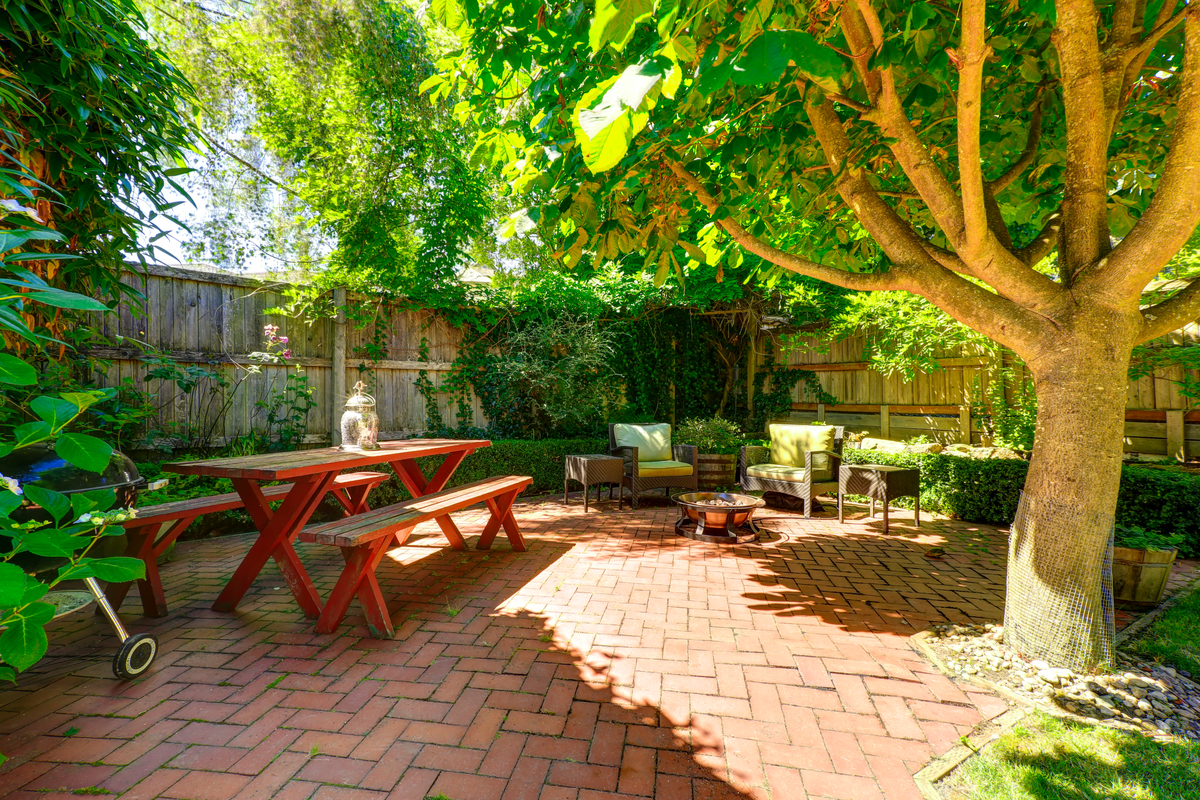
10. Poor Tree Placement, Planting, or Planning
There are several mistakes folks make when planting trees. One common mistake is planting trees too deep. To avoid this mistake, simply plant trees no deeper than the root ball. If you are not sure how to do this, just plant the tree at the same level below the soil that it is in the pot.
Another mistake folks make when planting trees is failing to think about how big they are going to get and how that will affect your landscaping or structures in the future. If you plant a tree with an expansive root system too close to your home’s foundation, a wood deck, or a concrete driveway, you might have future issues with the roots damaging these structures as they grow. Another example would be planting a tree that is small and perfectly frames a great view right now but that will block the view once it matures and grows to its full height. Similarly, a canopy of trees is great for providing shade but will block any potential stargazing, so you might need to make a decision between the two or have an area designated for enjoying the night sky.
Know how big your trees are going to be at maturity so that you can plant them in a manner that keeps the branches from scraping against windows or hanging over the roof, that keeps them from shading flowerbeds with plants that need full sun, that will provide shade for outdoor living areas without dropping excessive acorns or leaves into your swimming pool.
11. Making Patios and Outdoor Living Areas Too Small
A patio should never be an afterthought. This is likely where you are going to spend the most time when in your yard and where you are going to have family cookouts and social gatherings. Patios should generally be as large as possible in relation to the size of your yard and the other landscaping features you want to include. At a minimum, they should be a 10-foot by 10-foot space, which is about as small as you can do and still have room for a dining table or at least some seating.
If you plan on including an outdoor kitchen, fire pit, or other features, it will need to be larger. And, of course, if you plan on entertaining much, you will also need to consider how much room folks will need to be able to comfortably hang out and move within the space.
Another landscaping tip that folks often overlook is that hardscapes are lower maintenance than most landscaping features and that they save water. So, a larger patio means less time spent caring for your yard, less water waste, and lower water bills.
12. Not Establishing a Color Palette
You do not have to plant only blue flowers or buy flowerpots in only shades of yellow, but you do need to have a color plan. Even the eclectic look of an English garden takes careful planning to make it aesthetically pleasing. Designing without a palette and choosing plants and features in various colors with no cohesive plan is a big mistake. You could end up with too many colors or just too much color, which will take away from your overall design. Or you could end up with a monochromatic look with no pops of color for visual interest.
Fortunately, this mistake is easy to avoid. All you have to do is choose a color palette before you start painting structures or buying plants. Choose colors that complement your home’s main color and trim colors, and include accent colors that harmonize with the overall design while adding visual interest.
13. Overcrowding Your Yard with Features or Ornamentation
There is such a thing as too many statues, too many lawn ornaments, and even too many trees. One garden gnome might bring a bit of whimsy to your front yard, but a dozen of them will distract from your landscaping and be the only thing folks see when they pass your house. Avoid clutter, keep non-functional ornamentation to a minimum, and carefully curate anything you add to your yard.
This also goes for trees, shrubs, and plants. Too many will give an overcrowded look that will detract from your design and is not good for them, since good air circulation is integral to their health. Keep in mind that even though your plants might not seem crowded now, they might once they are mature. Know how big your plants are going to get before planting them so that you can plan accordingly.
Simple, clean landscaping looks best and is easiest to maintain.
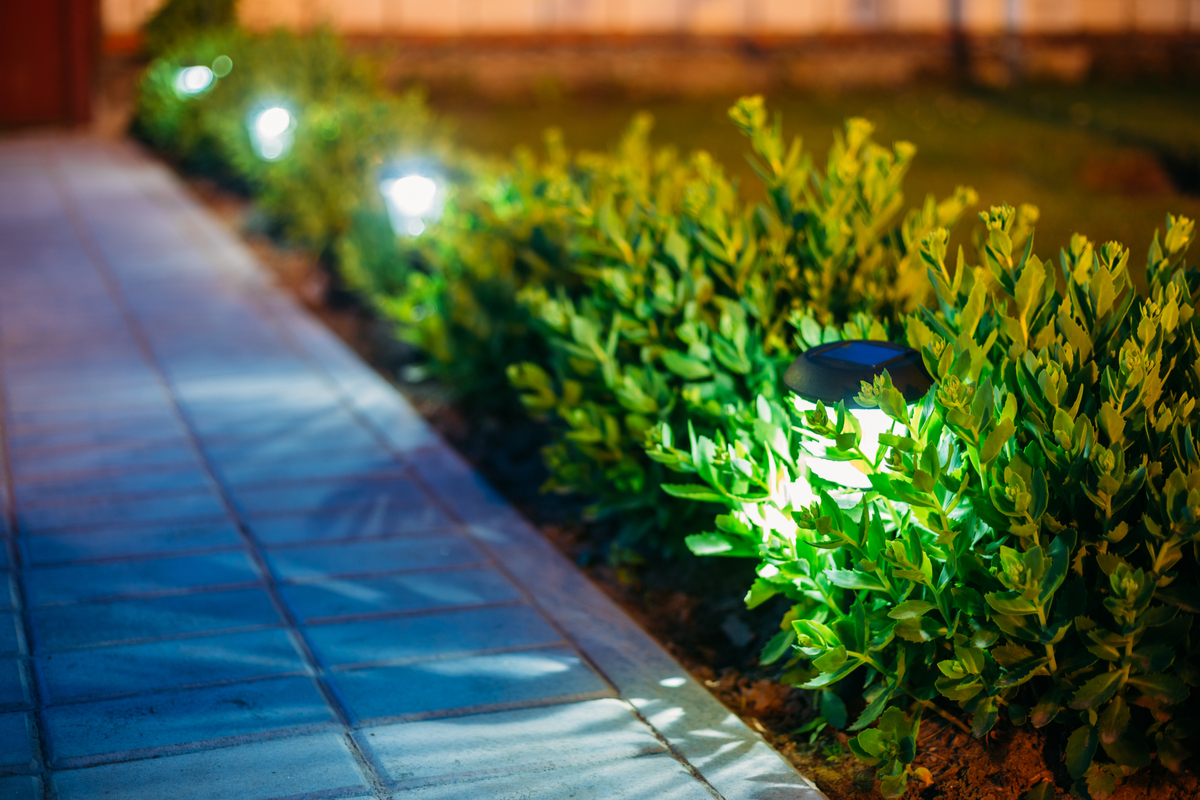
14. Overlooking Outdoor Lighting Needs
We have seen way too many cases where a homeowner designed a beautiful, functional landscape with attractive features, well-placed walkways, and welcoming outdoor living areas but completely forgot to include an outdoor lighting plan. Adding outdoor lighting after the fact makes it more difficult to run and conceal wires and reduces placement options for fixtures, since the best spots might already be taken by plants or other features.
Outdoor lighting is important for the visual appeal of your home and yard after dark, as well as for the safety of your family and guests, and to make your outdoor spaces more functional. Exterior lights guide guests safely down your driveway to designated parking areas, keep folks on safe walking paths and out of flowerbeds, and guide people to outdoor living areas. Outdoor lighting also sets the mood for evening entertaining, provides task lighting for grilling after dark, and accentuates focal points in your landscape design.
15. Planning Your Yard Without Considering Your Home
Some folks get so excited about the landscaping features they want to include and the size of their pool or their patio that they completely forget to consider their home and how it fits into the design. There are some plants that work well with certain architectural styles and do not work at all with others. There are also plenty of landscaping features that may not complement your home’s style well at all. For example, a brick driveway might look odd leading to a home with Mediterranean-style architecture, but a paving stone driveway would fit perfectly with this style.
You also need to consider how your home sits on the property and how your landscaping will look from inside your home. If you have a great mountain view from your dining room, make sure you do not plant trees that will block that view someday. If you have a favorite spot for enjoying your morning coffee, make sure your landscaping includes a nice view from that spot, since you will be seeing that view every day.
16. Buying Things on Impulse
Impulse buys can derail your overall design, make you go over budget, and result in overcrowding or a feature that needs more care than you realized. Have a purchasing plan, stick to it, and, when you fall in love with something that is not on the list, do a bit of research to make sure it will work for you before you make the purchase.
Things to consider include whether or not the item will work with your overall design, if it will work with the irrigation zone where you are thinking of planting it (if it is a plant), and if the price is going to affect your budget or keep you from buying something else on your list.
17. Going Too Linear in Your Design
Simple, clean lines can give your landscape design a contemporary look, but going too linear will make your yard look stark, unnatural, and unwelcoming. Even if you prefer the look of straight lines, make sure you also incorporate some curves to soften the look and make it more visually appealing and welcoming.
18. Ignoring Fire Safety
Any homeowner in Southern California who does not consider fire safety when designing a landscape is making a mistake. This mistake can be so significant that it could result in the loss of your home and all of your belongings or, in some cases, even the loss of life. It is imperative that all new landscape installations and remodels take fire safety into consideration for the safety of our families, our homes, our neighbors, and our communities.
Create a defensible zone around your home and other structures, choose fire-resistant plants, design your firewood storage to be safely away from structures, and have a plan to keep weed growth to a minimum.
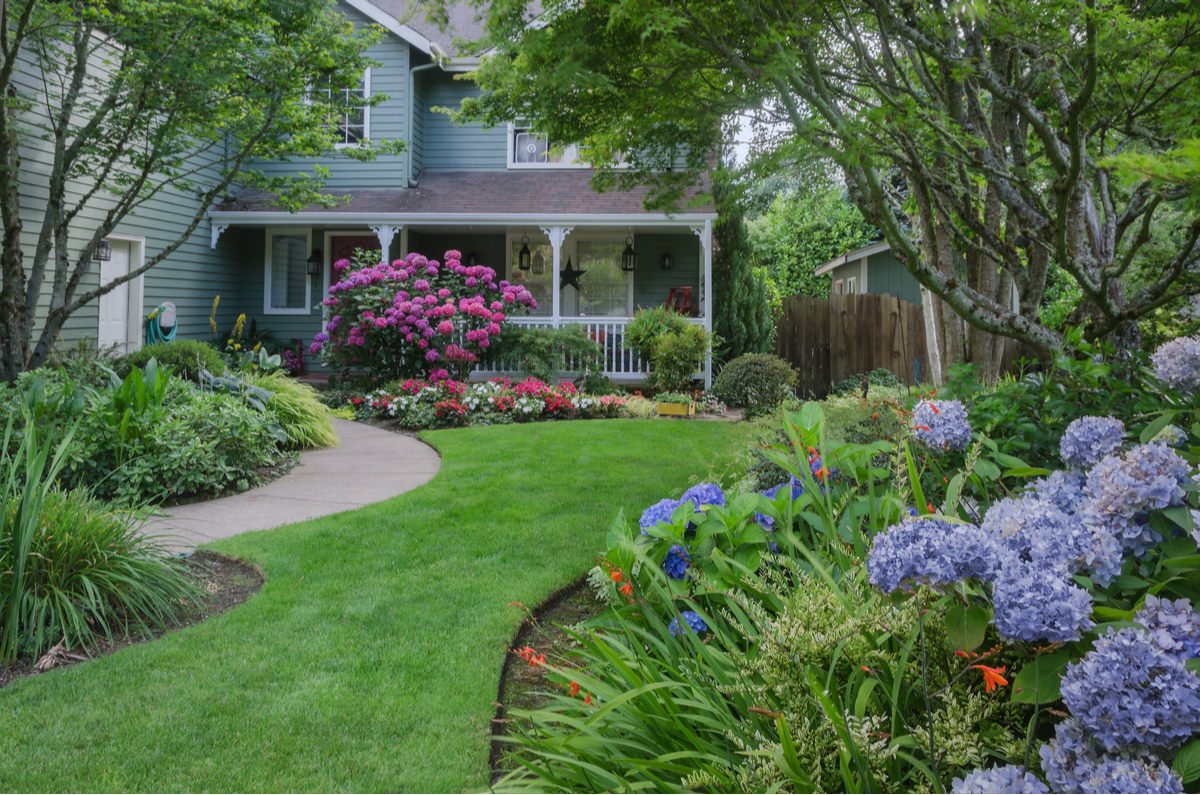
19. Not Considering Home Security
Unfortunately, most lists of landscaping tips do not include security considerations. This is likely one of the reasons that so many homeowners do not think about home security when designing their landscaping. This is a mistake you do not want to make, since this can directly affect the safety of your family and the security of your home.
For example, if you are not thinking about home security landscape design, you may block the line of sight from the street to your front door, create dark corners where intruders can hide, or plant trees that will grow in a way that allows intruders to use their branches to access second-story windows.
To make sure you take steps to avoid this mistake, we recommend also reading these previous posts:
- Home Security Landscaping Tips: Easy Ways to Make Your Home Safer
- 10 Home Security Tips for New Homeowners
- Increase Your Home Security with Landscape Lighting
20. Not Upgrading to Pavers
Some homeowners think they can save money by forgoing pavers and opting for slab or stamped concrete instead. Others just assume that paving stones are outside of their budget. Both of these scenarios are unfortunate, since they are often untrue and result in folks missing out on an opportunity to significantly upgrade the look of their outdoor living areas and even increase the value of their home.
The first thing to know is that stamped concrete installations and paving stone installations are often comparable in price. The difference is that stamped concrete is going to crack over time and will be basically impossible to match if you try to repair these cracks. On the other hand, pavers are more attractive and, if a paver cracks or is otherwise damaged, you can replace just that paver and maintain the integrity of your installation.
Poured concrete patios, walkways, and driveways often have a lower upfront cost when compared to paving stones; however, you may find that they cost more to maintain and repair over time. They will also not increase your home’s value as much as paving stone installations.
Paving stones come in a variety of colors and styles, so it is easy to find the right paver to complement the architecture of your home and your overall landscape design.
21. Poor Plant Selection
When selecting plants for your garden, color and texture are important considerations, but they are not the only ones. Considering only these two qualities can lead to choosing the wrong plants for your design. For example, if you do not research how tall and wide a plant grows before you buy it, you may end up planting too-tall plants that block a view or too-wide plants that crowd your planting borders.
You should also consider how each plant looks throughout the season and arrange your plantings to ensure visual interest in every season. You should also know the difference between annuals and perennials and have an understanding of which of these categories each plant on your list falls into so that you can plan accordingly.
Choosing native plants is always a good idea and will help you save both time and water, since they will require less irrigation and less maintenance to thrive. But do make sure that you include a good variety of plants, since planting the same plant in too many spots will result in a monochromatic look that lacks visual appeal.
When planning your plantings, arrange your trees, plants, and shrubs into irrigation zones so that the plants that need the same level of irrigation are planted together. You will also want to group your plants according to their sun and soil needs.
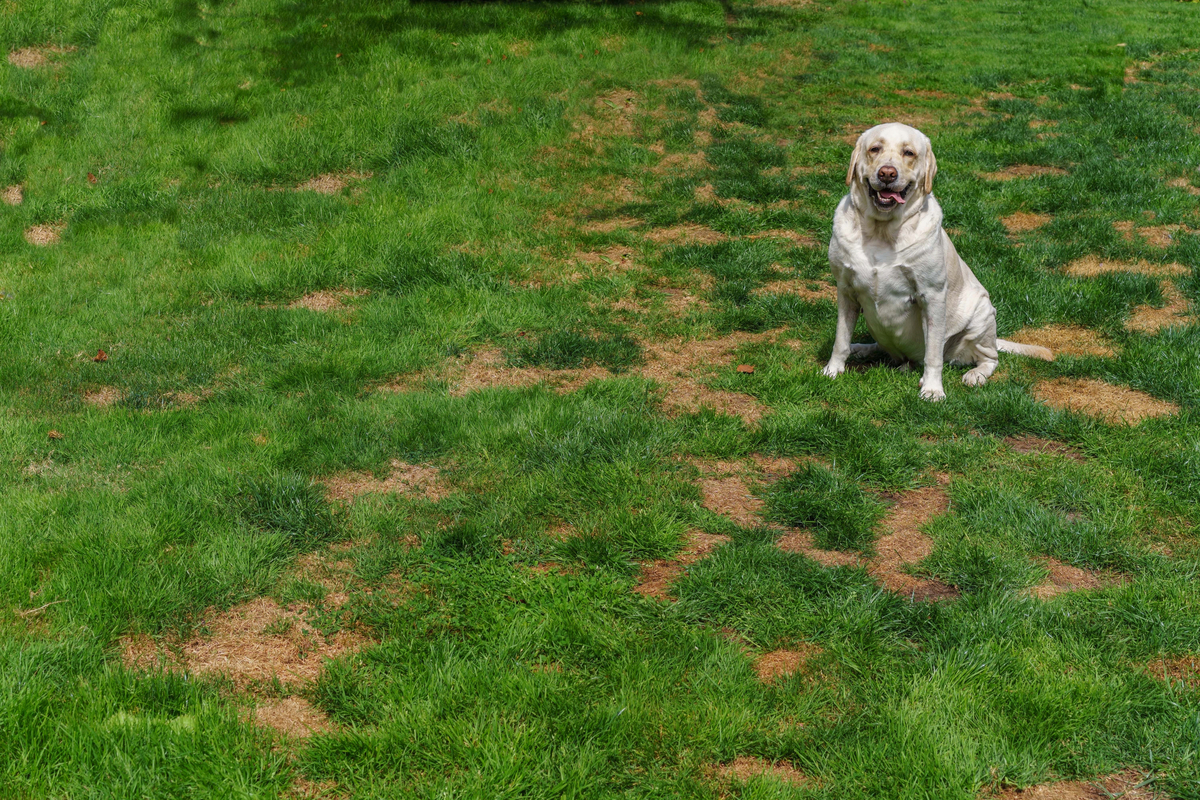
23. Not Giving Enough Thought to Pet Restroom Areas
If you have dogs or other pets that use part of your yard as a restroom, this is an important consideration during your landscape design. Do you want to create a designated area with a kitschy look that is obviously a dog restroom? Would you rather blend it in with the rest of your yard so that your guests will never know where your dogs do their business? What type of ground cover will work best for limiting odors and will make it easiest to clean up after your pets?
All too often, homeowners choose natural grass for pet restrooms without considering the pros and cons. Dogs do like the feel of natural grass, so that is a plus. One of the main cons to consider is that you are pretty much guaranteed to have brown spots in areas where your dogs frequently urinate. There is also the issue of bacteria building up in the soil and having a difficult time completely cleaning the area.
To avoid these issues, you might want to consider artificial turf for dog runs and dog restroom areas. This gives your dogs the feel of natural grass that they love, but allows you to never have to deal with brown spots. Synthetic grass is also easy to clean, since you can simply pick up the solid waste and use a hose to rinse off the liquid waste. If you notice a smell or are concerned about bacteria, a product like Urine Zero will quickly take care of these issues.
24. Not Considering Features You Already Have
Some landscapes are in such poor health or are so unattractive that you just need to rip it all out and start over. But that is not always the case. Take a good look at what you already have in your yard to see if you can include it in your landscape design as is or can move it elsewhere to incorporate.
For example, boulders are expensive landscaping features if you have to purchase them, but you may already have a few that you can move to wherever you were hoping to use add a boulder or two. You may also have some trees that do not look that great right now but could look great after they are cleaned up.
Using what you already have can help you save money and time and might even provide inspiration for your design.
25. Not Hiring a Landscape Designer or Landscape Architect
If your project includes more than just swapping out some plants or redesigning your vegetable garden, you may want to consider enlisting the help of a professional. A landscape architect is often the more expensive option and will create a full plan including elevation and grading. If you are installing an entirely new landscape, this may be the way to go.
For most homeowners, a landscape designer will be the most helpful and the most cost-effective. A landscape designer will help you create a plan that incorporates the functions and features you want in your yard into a cohesive overall design. They can help you save time and money and help to ensure that you get the most satisfactory result and the best return on your investment. They can also help ensure that your landscaping meets your needs and can even help you understand your needs better than you might on your own.
If you are ready to start planning your new landscaping, contact us and get connected with a landscape design consultant who can help bring your ideas to fruition in a functional, cohesive manner.